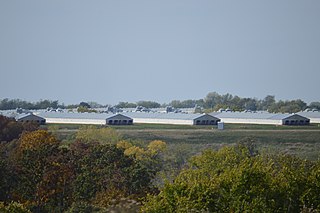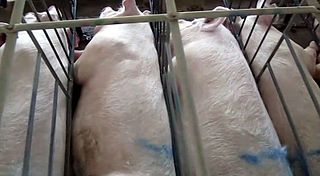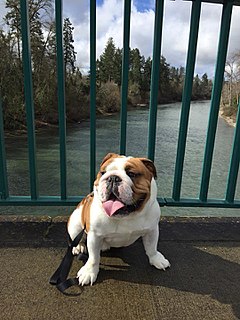 W
WBattery cages are a housing system used for various animal production methods, but primarily for egg-laying hens. The name arises from the arrangement of rows and columns of identical cages connected together, in a unit, as in an artillery battery. Although the term is usually applied to poultry farming, similar cage systems are used for other animals. Battery cages have generated controversy between advocates for animal welfare and industrial producers.
 W
WBile bears, sometimes called battery bears, are bears kept in captivity to harvest their bile, a digestive fluid produced by the liver and stored in the gallbladder, which is used by some traditional Asian medicine practitioners. It is estimated that 12,000 bears are farmed for bile in China, South Korea, Laos, Vietnam, and Myanmar. Demand for the bile has been found in those nations as well as in some others, such as Malaysia and Japan.
 W
WChick culling or unwanted chick killing is the process of separating and killing unwanted chicks for which the intensive animal farming industry has no use. It occurs in all industrialised egg production, whether free range, organic, or battery cage. Worldwide, around 7 billion male chicks are culled each year in the egg industry. Because male chickens do not lay eggs and only those in breeding programmes are required to fertilise eggs, they are considered redundant to the egg-laying industry and are usually killed shortly after being sexed, which occurs just days after they are conceived or after they hatch. Some methods of culling that do not involve anaesthetics include: cervical dislocation, asphyxiation by carbon dioxide, and maceration using a high-speed grinder. Maceration is the primary method in the United States.
 W
WIn animal husbandry, a concentrated animal feeding operation (CAFO), as defined by the United States Department of Agriculture (USDA), is an intensive animal feeding operation (AFO) in which over 1,000 animal units are confined for over 45 days a year. An animal unit is the equivalent of 1,000 pounds of "live" animal weight. A thousand animal units equates to 700 dairy cows, 1,000 meat cows, 2,500 pigs weighing more than 55 pounds (25 kg), 10,000 pigs weighing under 55 pounds, 10,000 sheep, 55,000 turkeys, 125,000 chickens, or 82,000 egg laying hens or pullets.
 W
WDebeaking, beak trimming, or beak conditioning is the partial removal of the beak of poultry, especially layer hens and turkeys although it may also be performed on quail and ducks. Most commonly, the beak is shortened permanently, although regrowth can occur. The trimmed lower beak is somewhat longer than the upper beak. A similar but separate practice, usually performed by an avian veterinarian or an experienced birdkeeper, involves clipping, filing or sanding the beaks of captive birds for health purposes – in order to correct or temporarily alleviate overgrowths or deformities and better allow the bird to go about its normal feeding and preening activities. Amongst raptor keepers, this practice is commonly known as "coping".
 W
WFarmageddon: The True Cost of Cheap Meat is a 2014 non-fiction book by Philip Lymbery and Isabel Oakeshott. It surveys the effects of industrial livestock production and industrial fish farming around the world. The book is the result of Lymbery's investigations for which he travelled the world over three years. Isabel Oakeshott is the political editor of The Sunday Times, Philip Lymbery is CEO of Compassion in World Farming. The book was published by Bloomsbury.
 W
WFur farming is the practice of breeding or raising certain types of animals for their fur.
 W
WA gestation crate, also known as a sow stall, is a metal enclosure in which a farmed sow used for breeding may be kept during pregnancy. A standard crate measures 6.6 ft x 2.0 ft.
 W
WIntensive animal farming or industrial livestock production, also known by its opponents as factory farming, is a type of intensive agriculture, specifically an approach to animal husbandry designed to maximize production, while minimizing costs. To achieve this, agribusinesses keep livestock such as cattle, poultry, and fish at high stocking densities, at large scale, and using modern machinery, biotechnology, and global trade. The main products of this industry are meat, milk and eggs for human consumption. There are issues regarding whether intensive animal farming is sustainable or ethical.
 W
WIntensive pig farming, also known as pig factory farming, is the primary method of pig production, in which grower pigs are housed indoors in group-housing or straw-lined sheds, whilst pregnant sows are housed in gestation crates or pens and give birth in farrowing crates.
 W
WLivestock branding is a technique for marking livestock so as to identify the owner. Originally, livestock branding only referred to hot branding large stock with a branding iron, though the term now includes alternative techniques. Other forms of livestock identification include freeze branding, inner lip or ear tattoos, earmarking, ear tagging, and radio-frequency identification (RFID), which is tagging with a microchip implant. The semi-permanent paint markings used to identify sheep are called a paint or color brand. In the American West, branding evolved into a complex marking system still in use today.
 W
WPet rental is the practice, usually administered by for-profit companies, of renting pets such as dogs and cats. Rental also includes animals who are hired out at a specific rate for a specific time. It is a controversial practice opposed by many animal rights advocates and has been banned in at least one municipality: Boston, Massachusetts.
 W
WCosmetic testing on animals is a type of animal testing used to test the safety and hypoallergenic properties of cosmetic products for use by humans.